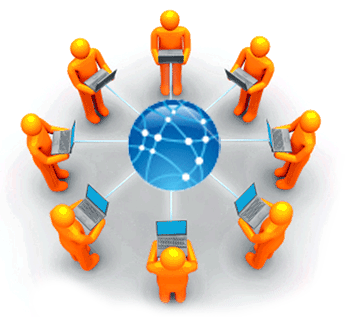Simply put, social intranet is a company’s internal website used by its employees for sharing knowledge and project activities. It can even host information about the company’s policies and procedures. Mainly it allows employees to connect with each other in a meaningful way and allows them to create and share content.
Features include having a top class content management system, search capabilities, as well as a collaboration system allowing employees to interact and share their work. In most cases, social intranets in companies take the garb of enterprise social networks. They incorporate most of the features of social networks found in the consumer space like Facebook and Twitter. Employees are happy using such social intranets as they have already used the features and tools available in the consumer social networks.
Many company intranets use the best of both worlds by integrating official company intranets with a social network model for the benefit of the employees.
Traditionally, company intranets have restricted authorship and permission levels. Such content is not kept in the public domain for employee view nor are they allowed to share. Social intranets have changed all that. Social intranets are built for the people and enables employees to participate at all levels.
The philosophy behind it.
Social intranets are paving a new way in terms of how employees and organizations should work together, share knowledge and discoveries. The philosophies are all encompassing. It is democratizing information sharing and interaction across the organization.
Please find some philosophical points below.
- Social intranets are for people and organizations need to be cognizant of this by giving them the freedom to interact and share their interests.
- Social intranets should recognize and facilitate cross-functional communication and collaboration among people and various business units.
- The ownership of running the intranets should be passed on to the employees with suitable moderators and knowledge brokers who can liaise with the management and business units.
- Ability for social intranets to integrate organizational business processes as well.

Features
There are ‘nice to have’ and ‘must have’features, which can be included as part of social intranets.
For example, social intranets can include staff directories with detailed information on how to contact them. On the contrary, people can find other people based on the content they share and talk about, which is truly a social tool style feature. Jive software is the only enterprise social network, which enables employees to discover other people from what they share and write about and not from company staff directory.
Social intranet can also include microblogging and collaboration shareware for people to interact, share documents, and discuss project related activities. Other features include provision of mobile app functionality, group pages, activity streams and multimedia uploads as well.
Lastly,
Social intranets have given a voice to the employee community. Employee’s at least some of them are not interested in knowing about the ‘mission’ and ‘vision’ of the company but they want a ‘sense of belonging’ with the organization through a community and close the gaps among employees separated by distances. I think the Social intranet fulfills that need and creates a shared understanding for them to work together.








